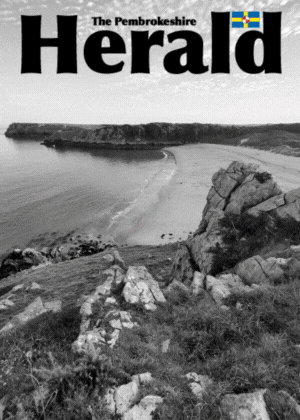Community
Has the mystery of how Preseli rock got stonehenge finally been solved?
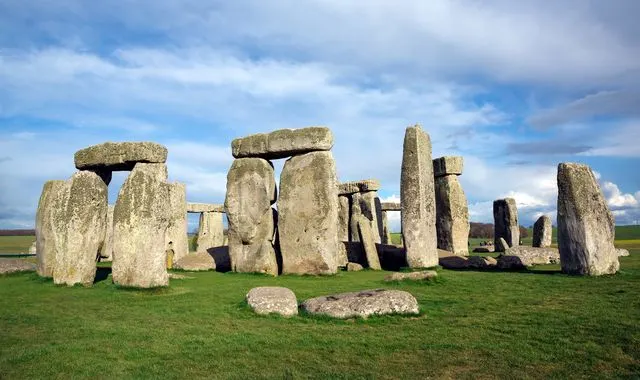
- ‘Lost’ Boulder Proves the Bluestones Were Transported from Wales by Glacier Ice – and NOT by Humans, Study Claims
A NEW study of the ‘lost’ Newall Boulder suggests it was transported by ice, potentially overturning the theory that humans moved the stones for Stonehenge.
How Neolithic humans might have transported so many huge boulders from Wales to Stonehenge is one of archaeology’s most enduring mysteries. However, a new study of a ‘lost’ boulder taken from the Stonehenge site over 90 years ago suggests that humans might not have moved the stones at all.
Dr Brian John, a retired geology lecturer from Durham University who lives in Pembrokeshire, argues that this bluestone boulder bears marks which suggest it was moved by glacial ice. This would undermine the common theory that the bluestone was quarried in the Preseli Hills of southwest Wales and manually transported to the Salisbury Plain.
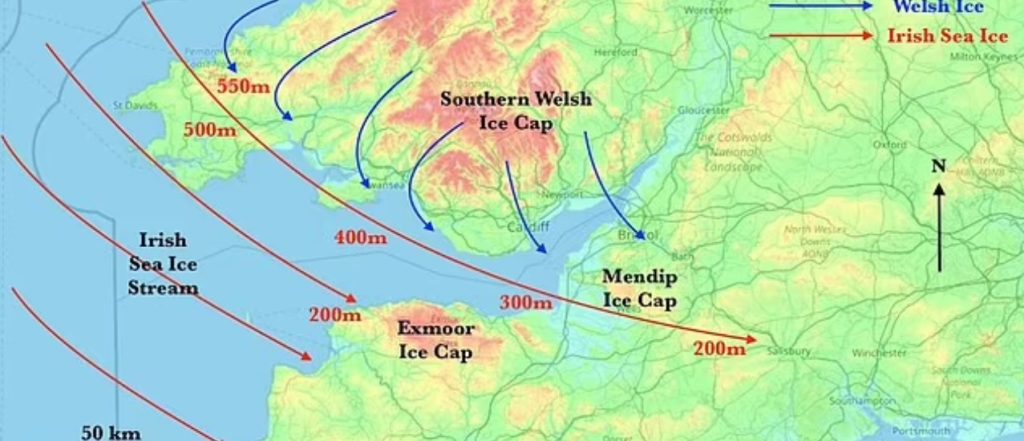
Dr John said: “I think it’s hugely significant because it supports the assumption I’ve had for some years that these are not humanly-transported.”
In addition to the tall Sarsen stones that make up Stonehenge’s distinctive appearance, the site is also home to around 80 smaller bluestones. It is generally agreed that these stones originate from the Preseli Hills of south-west Wales, but how they got to Stonehenge is often debated.
Dr John’s argument centres on an analysis of a bluestone boulder about the size of a human skull, known as the Newall boulder. This boulder was first excavated in 1924 by the geologists Colonel Hawley and Robert Newall. Hawley originally thought the rock was just a piece of rubbish and wanted to throw it away rather than analyse it. However, Newall saved the stone from the rubbish heap and placed it in a cardboard box in his attic alongside a number of other finds from the site.
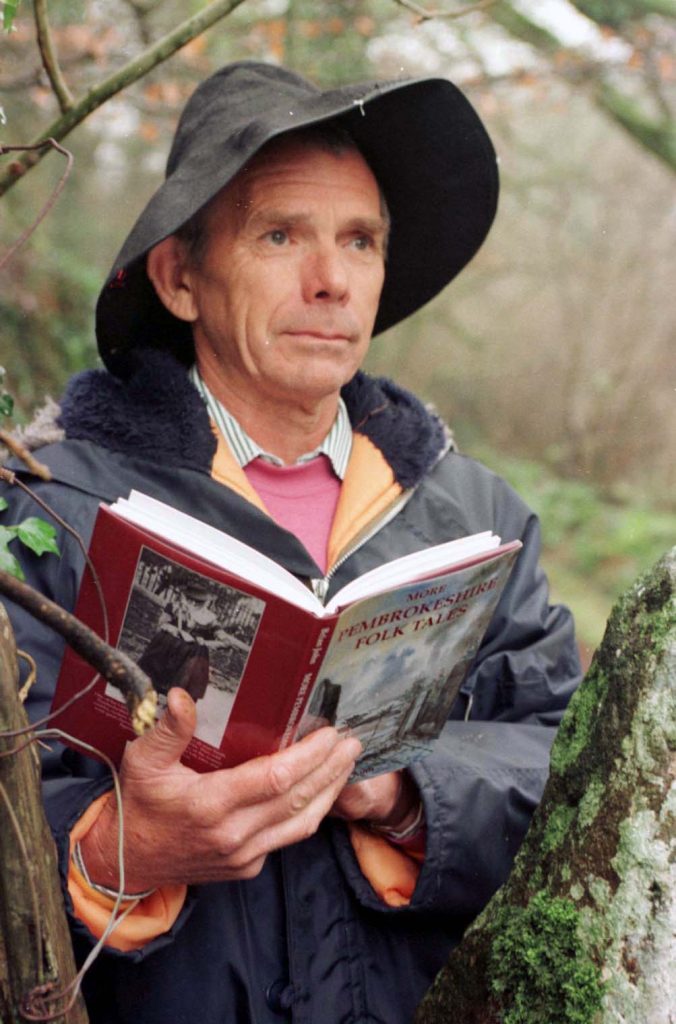
The boulder remained there until Newall passed it over to the Salisbury Museum shortly before he died in 1976. There was a brief burst of interest in the boulder around 1977, but then it was placed back into storage and effectively forgotten for another 46 years.
However, in 2022, Dr John found a reference to the boulder and asked the Museum Director, Adrian Green, if it was still in storage. On discovering that it was, he was given permission to examine it and undertake a careful examination of its surface features.
Through a detailed analysis of the boulder’s surface, Dr John identified a series of marks that suggest glacial, rather than human transport. “Glacially transported boulders tend to have facets,” Dr John explains. “That means they’ve got a number of different faces at angles to one another which actually indicated where a boulder has been abraded or, basically, sanded down.”
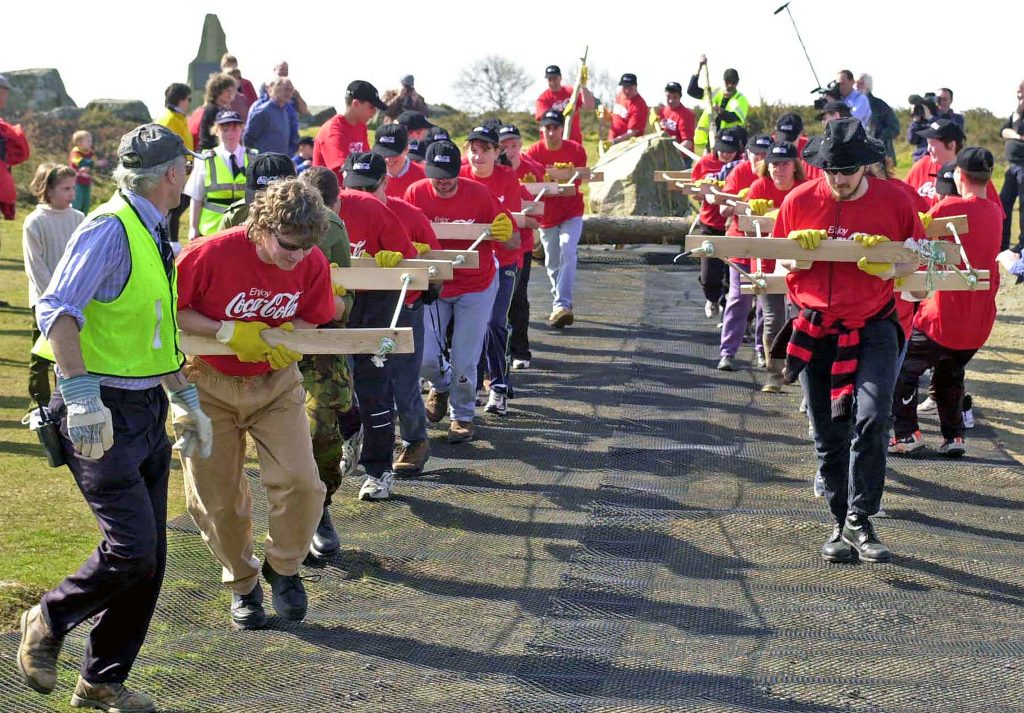
As boulders move with a glacier, they get flipped over from side to side, creating several different flat faces with rounded edges, just like the Newall boulder. In addition, the boulder bears a series of scratches and small fractures, called striations and chatter marks, which are often caused by glacial transport.
And although the Newall Boulder isn’t exactly the same type of rock as the other bluestones, Dr John says this is exactly what his theory would predict. He says: “It’s often claimed in popular articles that the bluestones are all made of spotted dolerite which is this type of igneous rock we get on the Preseli Hills but they’re actually about 30 different rock types. That enormous range of rock types is absolutely typical of the way that ice travels across the terrain and picks up boulders from here there and everywhere.”
Dr John suggests that this provides convincing evidence that the Newall boulder and all of the smaller bluestone boulders at Stonehenge were moved by glacier. His claims land him squarely at the centre of one of Stonehenge’s most contentious debates. The idea that the stones were transported to Salisbury Plain began with the geologist Herbert Henry Thomas in 1923. Although Thomas was quite spectacularly wrong about almost everything, the human transport theory is still extremely popular.
A team of researchers led by Professor Mike Parker Pearson of UCL have been some of the most active proponents of this theory, arguing that the stones were moved over land. Recently, Professor Pearson and his team even claimed to have discovered evidence which identifies the quarry of the Stonehenge bluestone, dating this to 3000 BC.
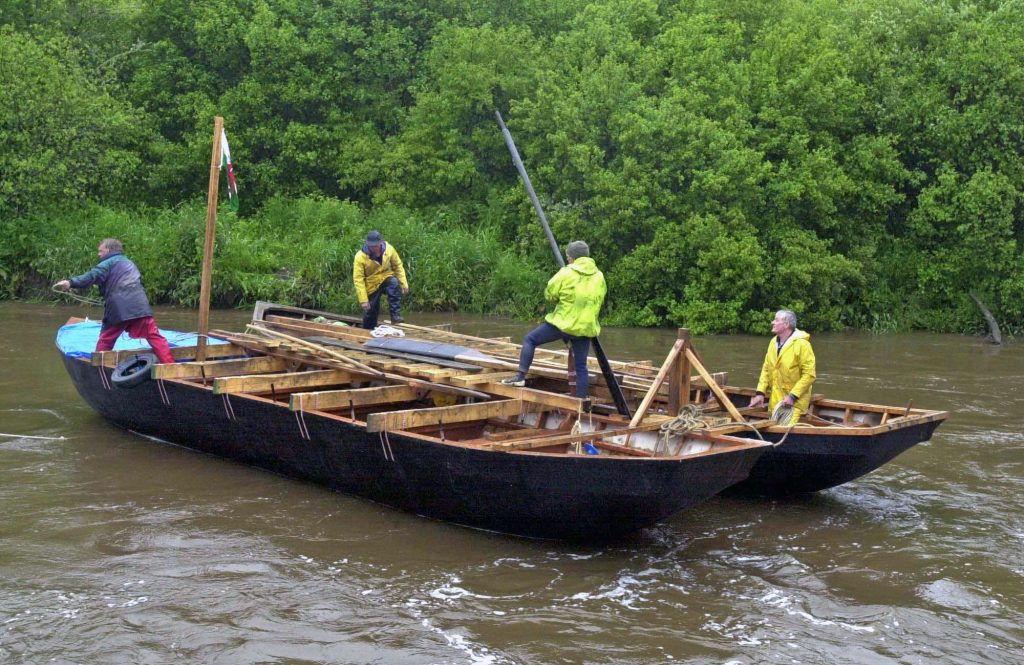
However, Dr John now says his discovery should “open up the debate” for a consideration of other theories. He says: “Herbert Thomas thought that because glacial transport was impossible they must have been carried by human beings. That’s now part of our national myth because people have not seriously questioned it before; it’s just been accepted as the truth.”
Instead of the orderly and rather deliberate building project we sometimes imagine Stonehenge to be, Dr John says: “I think it’s always been a bit of a shambles.” He argues that the Neolithic builders simply used the stones they had in their immediate vicinity, rearranging and moving the smaller bluestones as needed. And, when they eventually had to travel too far to gather more stones, the project was simply abandoned in the state we now find it. “It was a Neolithic cost-benefit analysis that eventually the costs of getting the stones were greater than the benefits that were coming from it,” he says.
However, the ultimate test for his theory would be cosmogenic dating – a test to determine how long rocks have been exposed to the surface by measuring their exposure to cosmic rays. If Dr John is right, the deeply weathered surface of the rocks should have been exposed to the elements for hundreds of thousands of years. Alternatively, if the stones were quarried they should only have been exposed to cosmic radiation for around 3,000 to 5,000 years.
While the debate over the origin of the stones is still very much alive, Dr John believes the evidence of weathering will remain strong. He concludes: “I’m very confident that if one or other university can get its act together and actually get this done these stones will be seen to have been subject to cosmogenic bombardment from the atmosphere for possibly hundreds of thousands of years. That would knock the quarrying idea on its head once and for all.”
Business
Community council objections to Tenby Lidl store scheme

PLANS for a new store on the edge of Tenby by retail giant Lidl, which has seen objections from the local community council, are likely to be heard next year.
In an application recently lodged with Pembrokeshire County Council back in October, Lidl GB Ltd, through agent CarneySweeney, seeks permission for a new 1,969sqm store on land at Park House Court, Narberth Road, New Hedges/Tenby, to the north of the Park Court Nursing Home.
The proposals for the latest specification Lidl store, which includes 103 parking spaces, would create 40 jobs, the applicants say.
The application follows draft proposals submitted in 2024 and public consultations on the scheme, with a leaflet drop delivered to 8,605 local properties; an information website, with online feedback form; and a public exhibition, held last December at the De Valence Pavillion in Tenby, with a follow-up community event held at New Hedges Village Hall, close to the site, publicised through an additional postcard issued to 2,060 properties.

Some 1,365 responses have been received, with 89 per cent of respondents expressing support for the proposals, the applicants say.
A supporting statement says: “Lidl is now exceptionally well established in the UK with the Company operating c.980 stores from sites and premises both within and outside town centres. Its market share continues to increase substantially, and the company is expanding its store network considerably. The UK operational model is based firmly on the success of Lidl’s operations abroad with more than 10,800 stores trading across Europe.
It adds: “The granting of planning permission for the erection of a new Lidl food store would increase the retail offer and boost the local economy. The new Lidl food store would create up to 40 employment opportunities for people of all ages and backgrounds, providing opportunities for training and career development. This in turn will create an upward spiral of economic benefits.”
Local community council St Mary Out Liberty Community Council has formally objected to the scheme, saying that, while it supports the scheme for a Lidl store in principle, recognising “the economic benefits a new retail store could bring,” it says the proposed location “is unsuitable, conflicts with planning policy, and cannot be supported in its current form”.
Its objections add: “The A478 is heavily congested in peak tourist months. A supermarket would worsen congestion, increase turning movements, and heighten risks to pedestrians, cyclists, and emergency access.”
It also raises concerns on the potential impact through “noise, lighting, traffic disturbance, and loss of quiet amenity” on a neighbouring residential care home.
An initial assessment by Pembrokeshire County Council, highlighted concerns about the visual impact, with the authority’s landscape officer commenting that the store would introduce “an intense urban function into an otherwise rural context”.
The report added: “It is not considered to be compatible with the character of the site and the area within which it is located; and furthermore, will lead to a harmful visual impact on the setting of the National Park.”
The application will be considered by county planners at a later date.
Community
Craig Flannery appointed as new Chief Fire Officer

MID AND WEST WALES FIRE SERVICE LEADERSHIP CHANGE
MID and West Wales Fire and Rescue Service has announced the appointment of Craig Flannery as its new Chief Fire Officer, with effect from Monday, December 15, 2025.
Mr Flannery has served with the Service for more than twenty years, progressing through a wide range of middle management and senior leadership roles across both operational and non-operational departments.
During his career, he has been closely involved in strengthening operational delivery, risk management and organisational development. His work has included leading innovation in learning and development, overseeing the Service’s On-Call Improvement Programme, and driving investment in key enabling functions such as workforce development and information and communication technology.
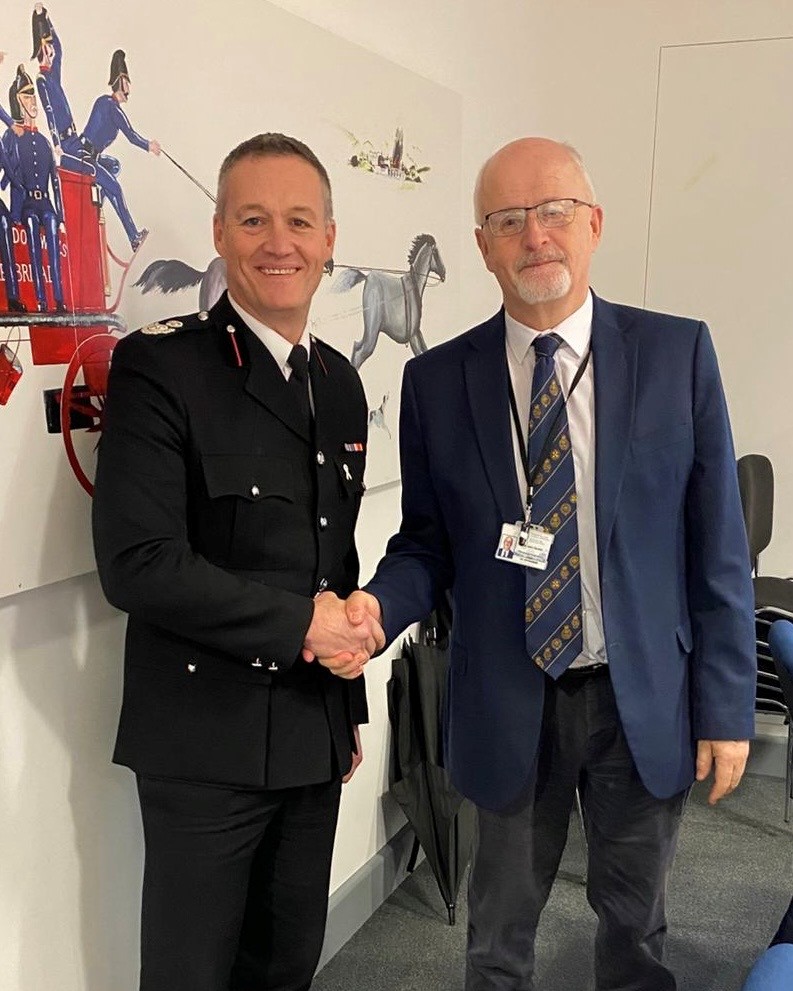
The appointment followed a rigorous, multi-stage recruitment process led by Mid and West Wales Fire and Rescue Authority. Candidates were assessed through structured interviews, strategic leadership exercises and scenario-based assessments designed to test operational judgement, organisational vision and the ability to lead a modern fire and rescue service.
External professional assessors were also engaged to provide independent scrutiny, ensuring the process met high standards of fairness, transparency and challenge.
Mr Flannery emerged as the strongest candidate, demonstrating clear strategic leadership capability, detailed organisational knowledge and a strong commitment to community safety and service improvement.
Councillor John Davies, Chair of Mid and West Wales Fire and Rescue Authority, said: “Craig brings a deep understanding of our Service and a clear vision for its future. His appointment will strengthen our ability to innovate, support our workforce and deliver high-quality protection for the communities we serve.
“As we navigate a rapidly changing landscape, Craig’s experience in driving innovation and organisational development will be invaluable in helping us adapt and transform for the future.”
Commenting on his appointment, Mr Flannery said: “It is a privilege to lead this outstanding Service. I am committed to supporting our people, strengthening partnerships and building on the strong foundations already in place.
“As the challenges facing fire and rescue services continue to evolve, we must modernise and innovate, ensuring we have the skills, technology and capability needed to meet the needs of our communities. I look forward to working with colleagues and partners across Mid and West Wales to deliver a resilient, progressive Service that keeps people safe and places our staff at the heart of everything we do.”
Community
Senedd unanimously backs sign language bill

PLANS to make Wales the best place in the UK for British Sign Language (BSL) users moved a significant step closer to becoming law with the Senedd’s unanimous support.
If ultimately passed, the BSL bill – introduced by the Conservatives’ Mark Isherwood – would end Wales’ status as the only UK nation without specific sign language protections.
Leading a debate on Wednesday December 17, Mr Isherwood said the Senedd supporting the bill’s general principles was a “huge step ahead” for the “vital” legislation.
Mr Isherwood, a disability rights campaigner for decades, explained his backbench bill would introduce legal requirements to promote and facilitate the use of BSL in Wales.
He said the bill, if passed, would be the most progressive piece of BSL legislation anywhere in the UK, recognising BSL is a language in its own right, not a communication support need.

He highlighted that the bill would establish a BSL adviser role, the first statutory post of its kind in the UK, describing its importance as something that “cannot be overstated”.
Mr Isherwood, who chairs cross-party groups on disability and deaf issues, told the Senedd: “This isn’t just my bill. This is the bill of the BSL community. Let’s make this happen together and be proud of it together on behalf of deaf people across Wales.”
Jenny Rathbone, the Labour chair of the Senedd’s equality committee, was convinced of the “overdue” need for legislation to give more standing to British Sign Language.
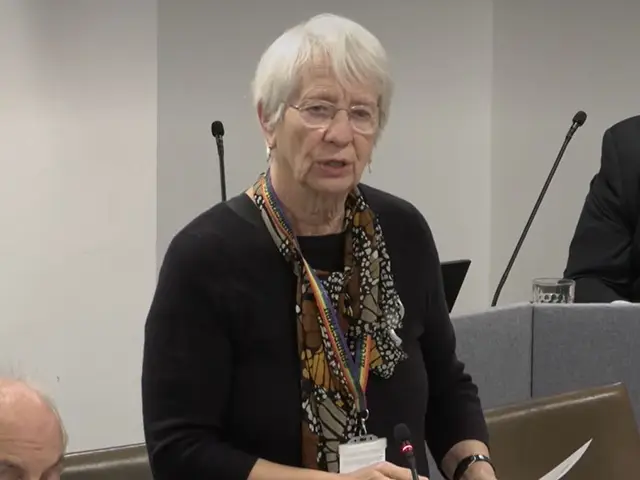
Ms Rathbone said the committee heard the biggest barrier “by some margin” was the availability of interpreters and the sustainability of the workforce.
She quoted a signer who told the committee: “The bill would make us feel respected and valued. But without proper funding, planning and deaf-led leadership, it won’t go far enough.”
Sioned Williams, Plaid Cymru’s shadow social justice secretary, told Senedd members: “Language is a part of our identity, our culture and our personal dignity.
“When someone cannot use their language, they are excluded from education, health care, employment and public life – and that is not acceptable in today’s Wales.”

Ms Williams warned that if the legislation fails to deliver real change, the deaf community would be left “angry, disappointed and very, very disheartened”.
She expressed concern that the bill does not legally require the BSL adviser to be a deaf person, arguing it is “not appropriate, possible or efficient” for non-signers to lead the way.
Mr Isherwood defended the decision not to require that the adviser must be deaf, warning a successful legal challenge to a single such provision could cause the entire bill to fail.
Welsh Liberal Democrat leader Jane Dodds warned of an immediate workforce crisis, with only 54 registered sign language interpreters in Wales as of July.
With many now approaching the end of their working lives, she said: “We cannot – we must not – allow this bill to fail because we didn’t have the foresight to address this crisis now.”
Support for the bill stretched across the political spectrum, with Reform UK’s Laura Anne Jones similarly welcoming the “long-overdue” and “vital” legislation.
Jane Hutt, Wales’ social justice secretary, confirmed the Welsh Government’s financial backing, committing £214,300 for the bill’s first year of implementation in 2026/27.
If it clears the final hurdles, Mr Isherwood’s proposal will be the first backbench bill to enter the statute book in about a decade following the Nurse Staffing Levels (Wales) Act 2016.
-

 Crime2 days ago
Crime2 days agoMilford Haven man jailed after drunken attack on partner and police officers
-

 News5 days ago
News5 days agoDyfed-Powys Police launch major investigation after triple fatal crash
-

 Crime2 days ago
Crime2 days agoTeenager charged following rape allegation at Saundersfoot nightclub
-

 Crime3 days ago
Crime3 days agoMan charged with months of coercive control and assaults
-

 Crime4 days ago
Crime4 days agoMan sent to Crown Court over historic indecent assault allegations
-

 Crime5 days ago
Crime5 days agoMan spared jail after baseball bat incident in Milford Haven
-

 Crime3 days ago
Crime3 days agoMilford Haven man admits multiple offences after A477 incident
-

 Crime3 days ago
Crime3 days agoWoman ‘terrified in own home’ after ex breaches court order










